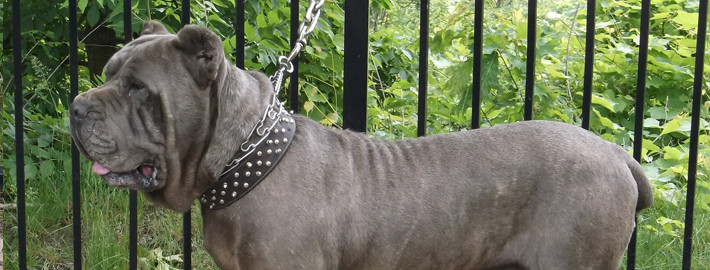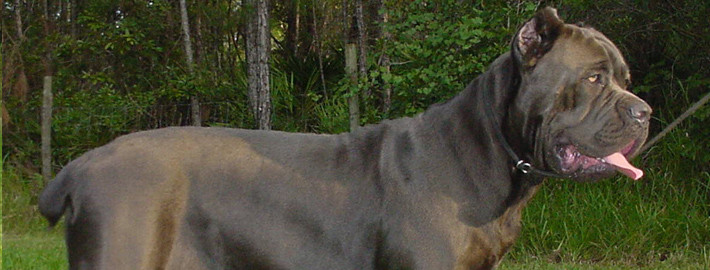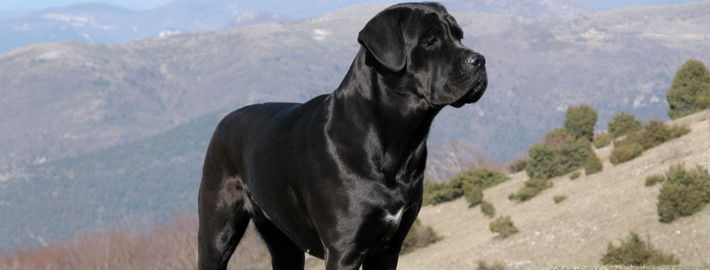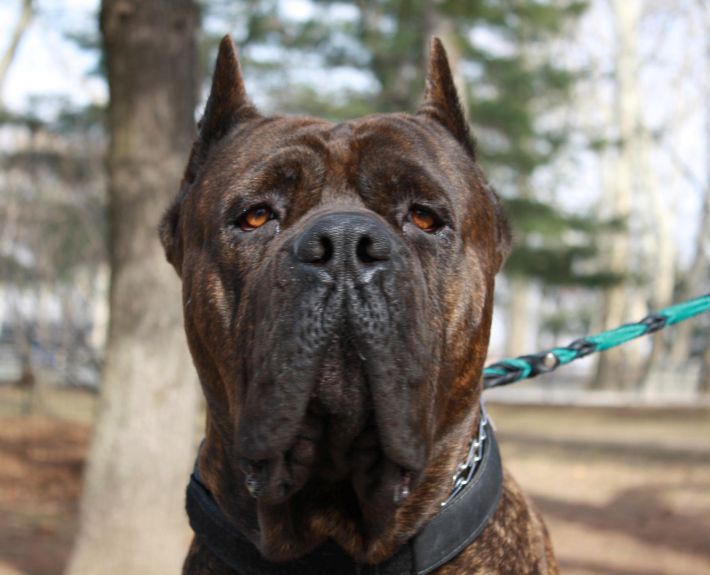What makes the Cane Corso Unique?
The Cane Corso has been winning hearts for centuries in its diverse roles as livestock driver, big game hunter, estate guardian, and companion. Despite their imposing stature, Cane Corsos are great with children and other pets. When properly trained, these smart, versatile dogs make a wonderful addition to families.
Breed Groups
Page Contents
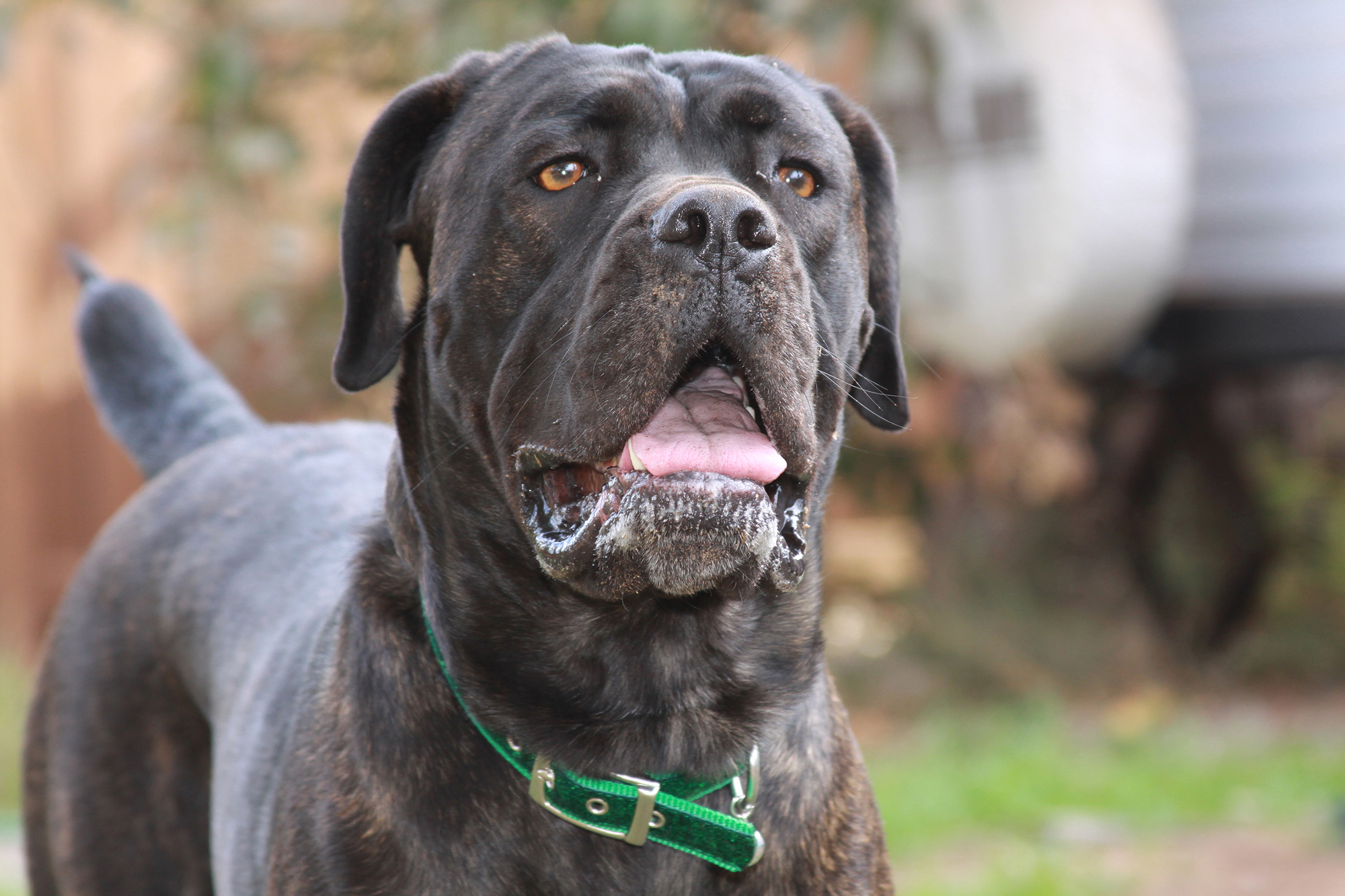
SnapShot
Is the Akita Inu Right For You?
Intelligent, the Cane Corso is easily trained. As a large and athletic breed, they need a lot of exercise. They are affectionate to their owner and bond closely with children and family. Cane Corsos are light shedders, which make grooming simple – all they need is an occasional brushing. If you are considering purchasing a Cane Corso puppy, learn more. *Working Group; AKC recognized in 2010.
*Ranging in size from 23½ to 27½ inches tall at the shoulder.
*Property watchdog; large-game hunter.
In 5 Words
- Even Tempered
- Reserved
- Calm
- Quiet
- Stable
Characteristics
Learn About the Cane Corso
Description
General Description
The Cane Corso is a large Italian Molosser, or mastiff-type breed. These dogs have well-muscled, athletic appearance and give an overall impression of power. Their skins should fit closely on their bodies, except on the neck. A Corso should have a muzzle that is as wide as it is long and should take up 1/3 of the entire skull. As a result, this breed has a powerful bite. These dogs have lips that hang slightly off their jawlines and most have black noses. Blue colored dogs are permitted to have grey noses as long as their nose is darker than their coat.
Left uncropped, the ears on this breed are naturally dropped forward. Where the practice is legal, cropped ears are shaped into upright, equilateral triangles. It is not uncommon for these dogs to have their tails docket at the fourth vertebra. Shorter docking is considered an eliminating fault under the Italian FCI 343 breed standard.
Size
According to the Fédération Cynologique Internationale (FCI) standards, a Cane Corso should stand between 62 and 72 centimeters (24 and 28 inches) at the withers, or the shoulder blades. Female dogs are often smaller than their male counterparts. These dogs should ideally weigh between 40 and 75 kilograms (88 and 170 pounds) and should correlate to their stature.
Coat
Black and fawn are the basic coat colors for this breed. However, dogs have been bred to have blue, formentino, and brindle colorations as well. It is not unheard of for a Cane Corso to have white markings on its chests, toes, chin or nose area. Those whose white patches are not as pronounced are preferred in the show ring. Dogs should not have tan points and black colorations.
Short History of the Cane
The Cane Corso is a working dog that is native to Italy. The breed’s ancestors, the ancient Roman Molossus, were used as war dogs and sometimes fought wild beast such as lions in the Roman areas. Molossian Mastiffs were in great demand as war dogs and household guardians for generations afterwards. Throughout the breed’s existence, the Corsi were used as big game hunters. These powerful and courageous dogs had a tracking ability that made them useful in catching stags, wild boars, and bears.
When big game hunting went into a decline, the Cane Corso breed found a new home with Italian farmers. On farms, these dogs were used to move other animals. This breed also served to protect livestock from both human thieves and animal predators. At the same time, a Cane Corso would serve as a guard dog for homes and estates.
The majestic breed was threatened when the agriculture regions in Italy headed towards industrialization. During the 1970s, dog lovers began to start selective breeding programs in order to preserve the Cane Corso. After the breed’s introduction in America during the late 1980s, these dogs became known for their abilities as both guard dogs and family companions. The breed was officially allowed to participate in American Kennel Club (AKC) events starting in 1996.
Temperament
Owners will find these dogs to be very loyal and willing to please. They are affectionate and protective of their human families, especially any young children. Cane Corsos are known to adore kids and stick close to their human families. These athletic dogs enjoy activities such as hiking, jogging, long walks, swimming, bike riding or playing fetch. For the most part, these dogs have stable temperaments and are not prone to spasmodic behaviors. In general, Cane Corsos will get along well with other pets. They are naturally suspicious of strangers but once the person is welcomed by their family, these dogs will be accepting of the newcomer. They are usually very good at determining friends from foes and know instinctively when they need to be more protective of their families.
Though they are quiet around the house and will only bark to alert their families, Cane Corsos are wonderful watch and guard dogs. They are not a breed that is prone to wandering away from home but they also have a strong sense of what is their territory. The Cane Corso is not a fighting dog but will not back down from a challenge either. When necessary, these dogs will bravely defend their families and homes. These tendencies can lead to aggressive behaviors, if the dogs are not properly socialized from a young age.
Caring for Your Cane Corso
General Health
In order to prevent typical problems such as hip or elbow dysplasia from arising later in life, a fresh diet is crucial for all mastiff breeds. Common health concerns for Cane Corsos include bloat, allergies, gastric dilatation, dysplasia, and epilepsy. Bloat, or Gastric Torsion, is a genuine problem for most large and giant dog breeds. Owners should familiarize themselves with the symptoms of this life threatening illness in order to know when to take their dogs to see a veterinarian.
Heart and eye problems are another concern for Cane Corsos. Cardiomyopathy, mitral valve defect, heart murmurs and other hereditary cardiac ailments are not unheard of in this breed. As is common with other mastiff types, the Cane Corsos are prone to cherry eye entropion, and ectropion along with other eye defects.
Care
Daily
These dogs are moderately active and need a long walk on a daily basis. Practicing obedience training skills for short periods of time on a daily basis will not come amiss either.
Weekly
Cane Corsos shed and will need to be brushed at least once a week.
Monthly
Prevention treatments for heartworm, flea, and ticks should be administered once a month.
Grooming & Bathing
These need a bath once every three months using a mild shampoo. Their ears should be cleaned and nails trimmed on an as needed basis.
Exercise & Training
Cane Corsos are incredibly intelligent and very trainable. A properly raised dog will be submissive to all family members. However, early socialization and obedience training are both highly recommended for Cane Corsos. This breed requires firm, consistent training. Limits must also be set from the beginning. What is acceptable behavior and what is not must be made clear to Cane Corsos from their puppyhood. With clear boundaries, proper exercise, and plentiful human companionship, these dogs make great companions.
Except for their ears, these dogs are reasonably impervious to pain. Cane Corsos also are territorial and they have high prey drives. All three of the aforementioned factors mean that electric fences are not useful for these dogs and will not serve to keep them in their areas. Strong, solid fences that reach at least six feet in height are recommended instead.

